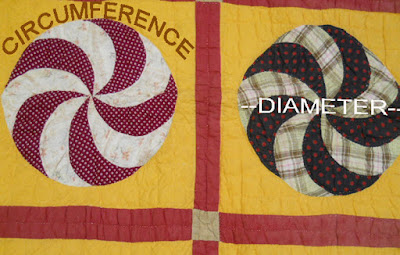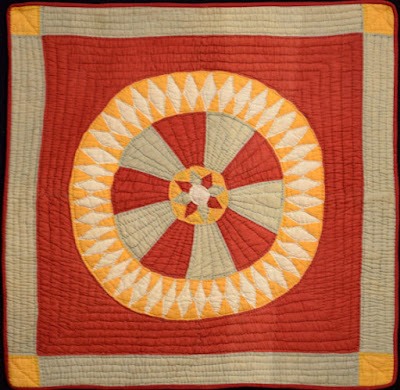Wagon Wheels by Sandy Klop
The Past Perfect feature for March is about Sandy Klop
of American Jane Patterns.
Wagon Wheels Repro Quilt
Perhaps inspired by this antique top from the late 19th century.
Every month this year I'm featuring a quilter who does a classic job of interpreting quilts from the past. Past Perfect. Sandy Klop is a classic herself.
Sandy designs fabric for Moda, specializing in
primary colors that echo traditional French Provincial design.
Stars & Stripes
Criss Cross
Edy's Quilt
Our mutual friend Edy has a antique in this marvelous design
Oh, My Stars.
Inspired by a quilt in the Camden County New Jersey
Historical Society collection, pictured in New Jersey Quilts on page 82.
Sandy's Primarily Houses
The inspiration from the late 19th century was pictured in a Quilt Engagement Calendar.
Sandy has a real eye for selecting unusual antiques that are perfect for her new fabrics.
Nickels & Dimes
Fiestaware Quilt
Festival of Light
Flying Circles
Her designs are impressive in their complexity (although she does simple quilts too) but what's also impressive is that she inspires others to stitch these complex reproductions.
Susan Dyer's version of Oh, My Stars
Kathy O's version of Oh, My Stars
Get inspired yourself at Sandy's American Jane Pattern page:























































